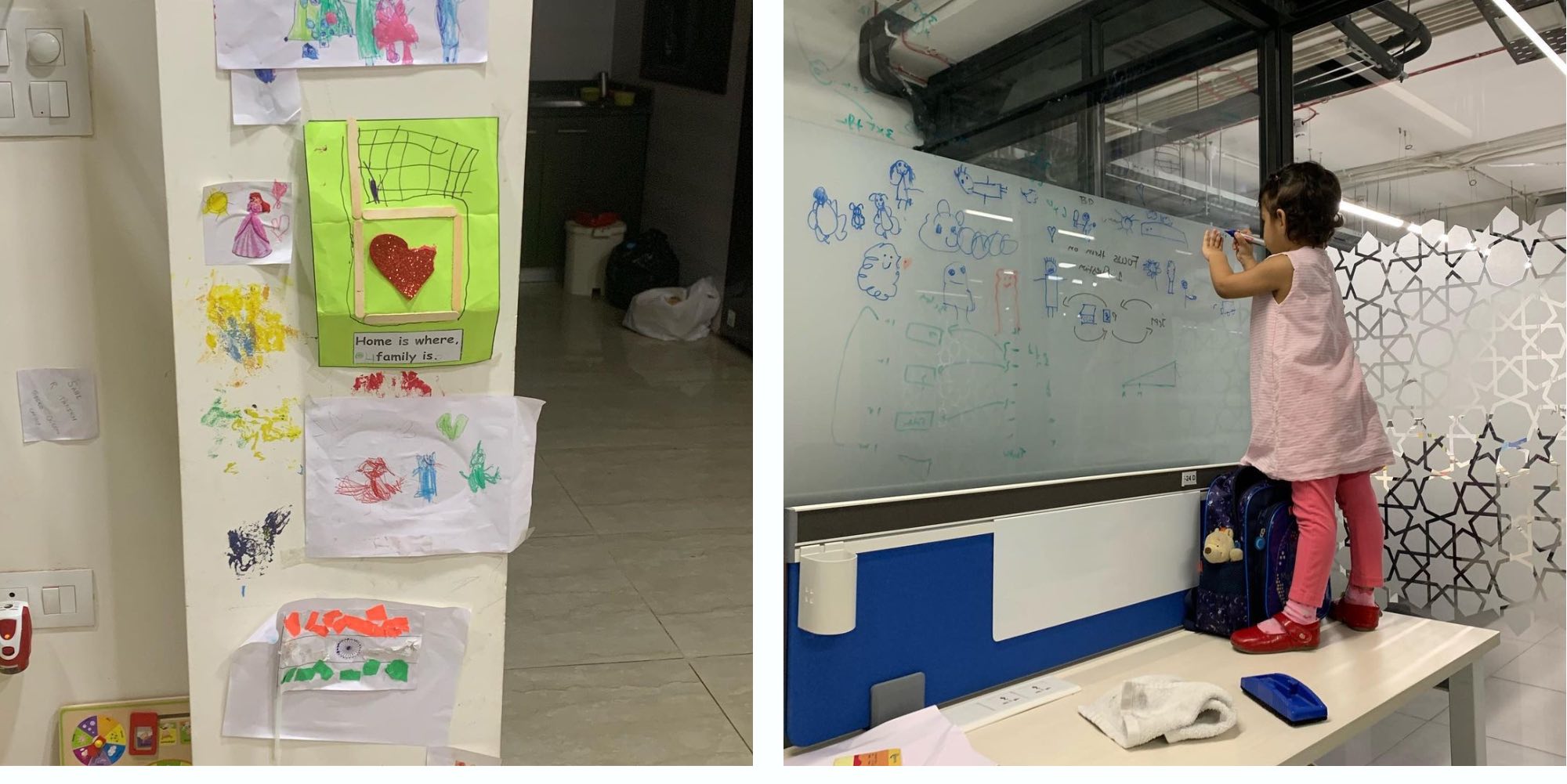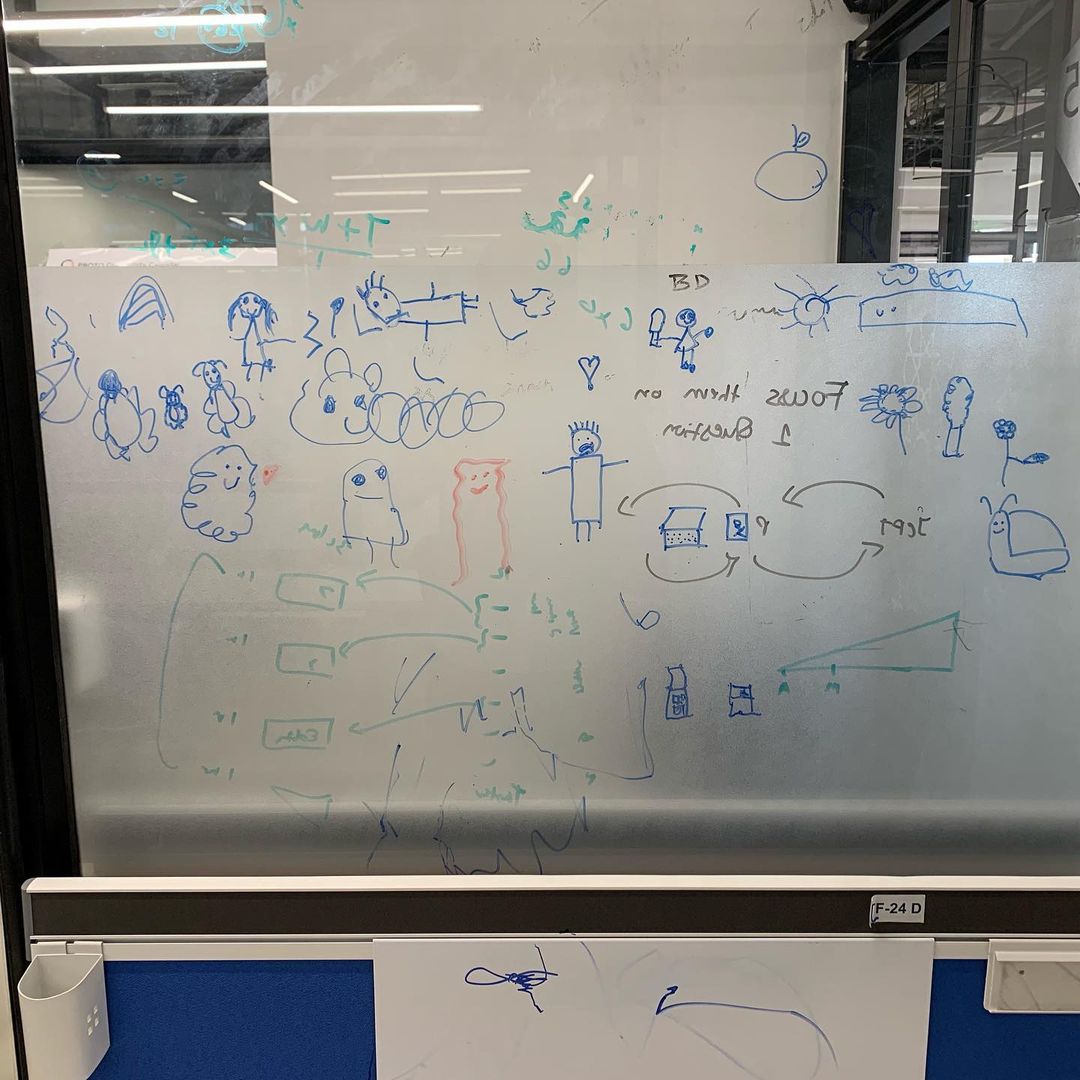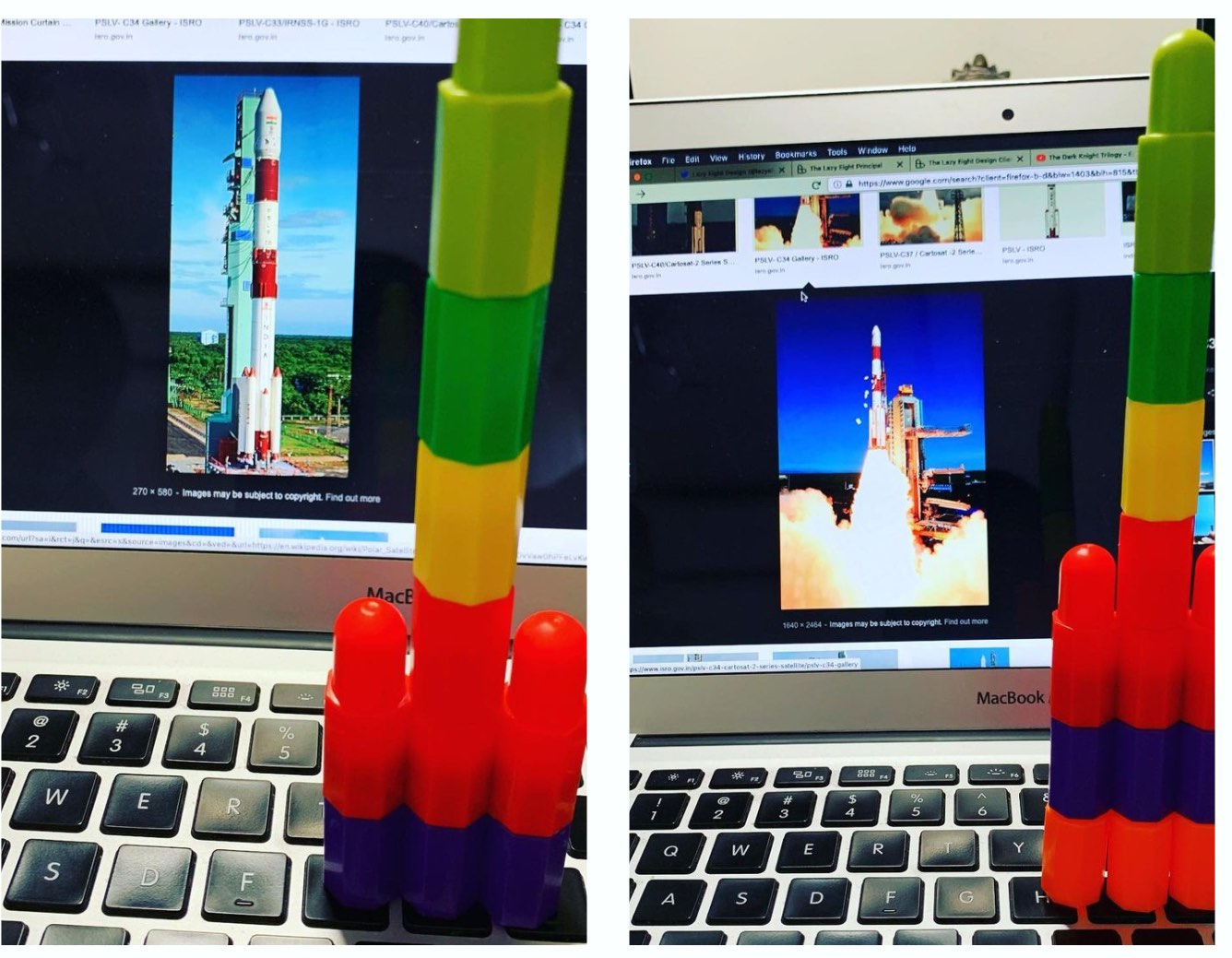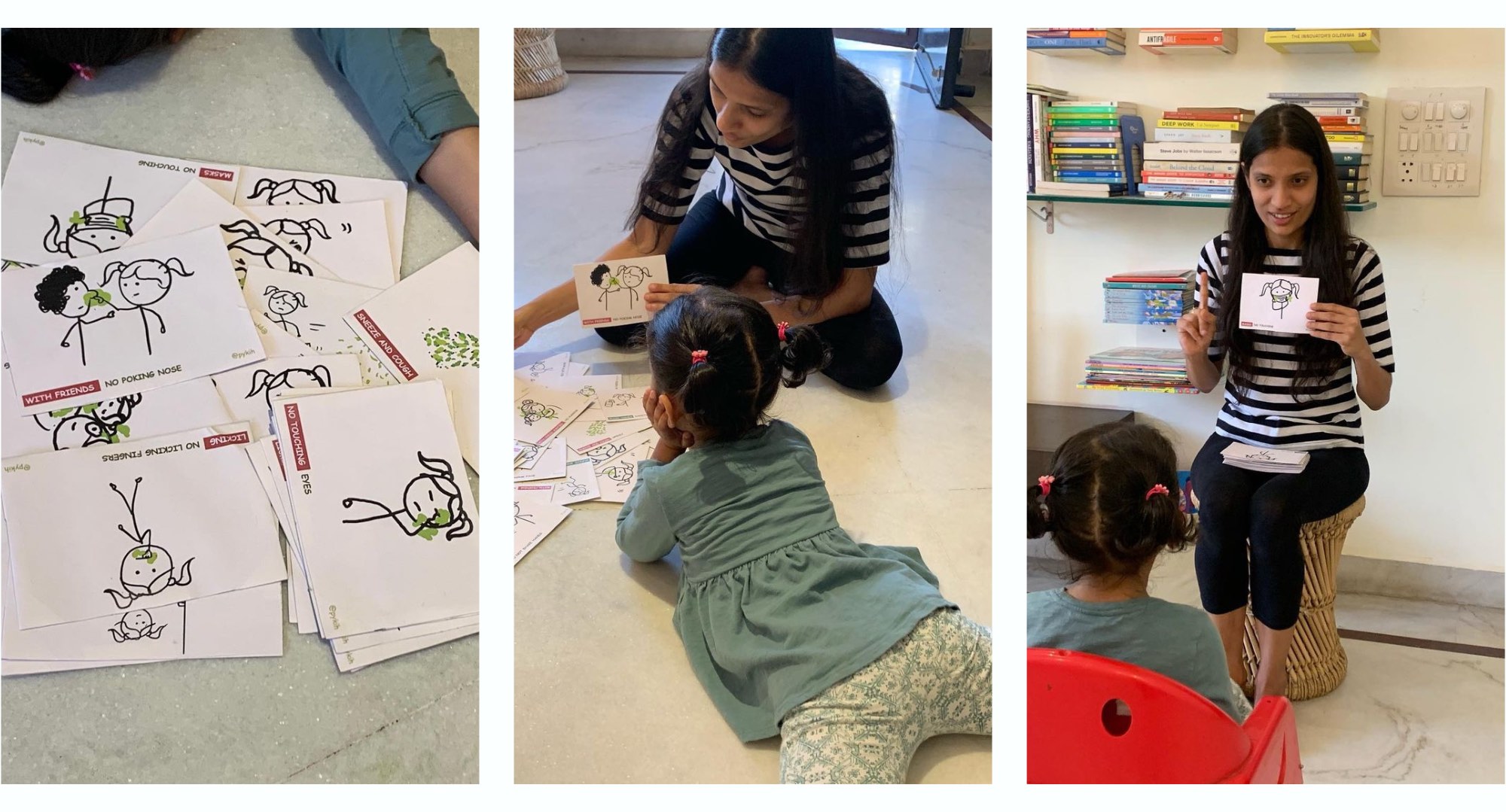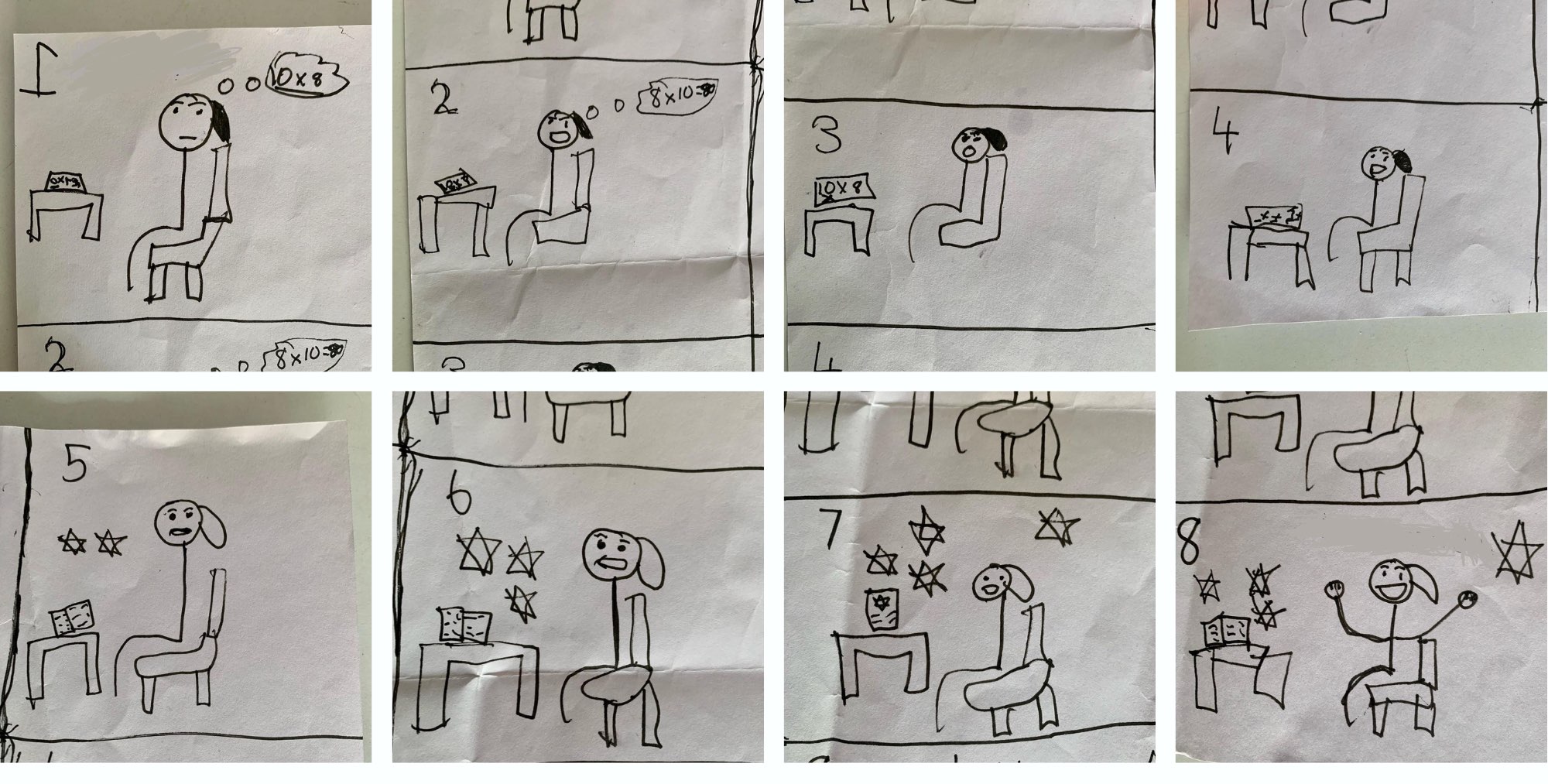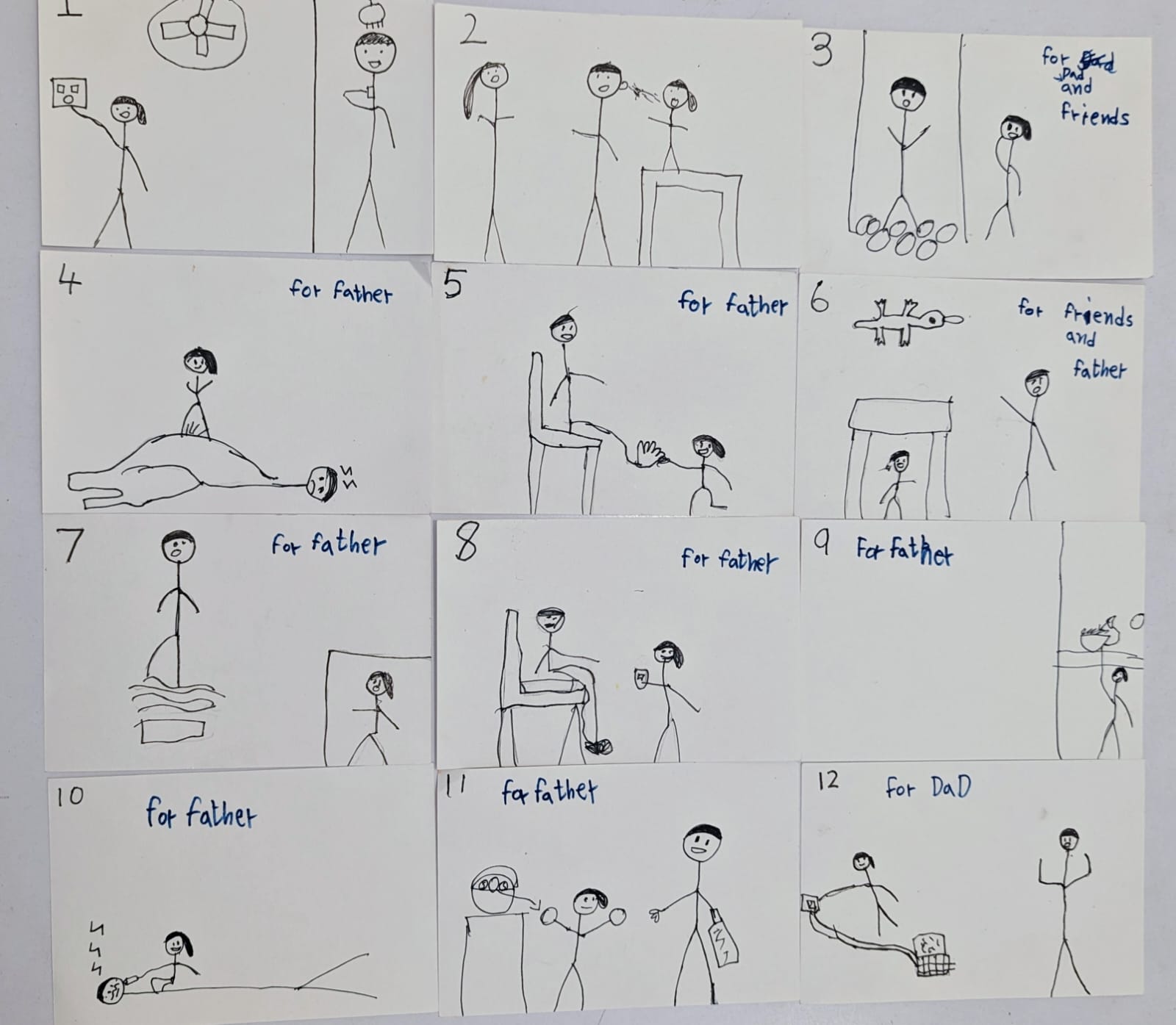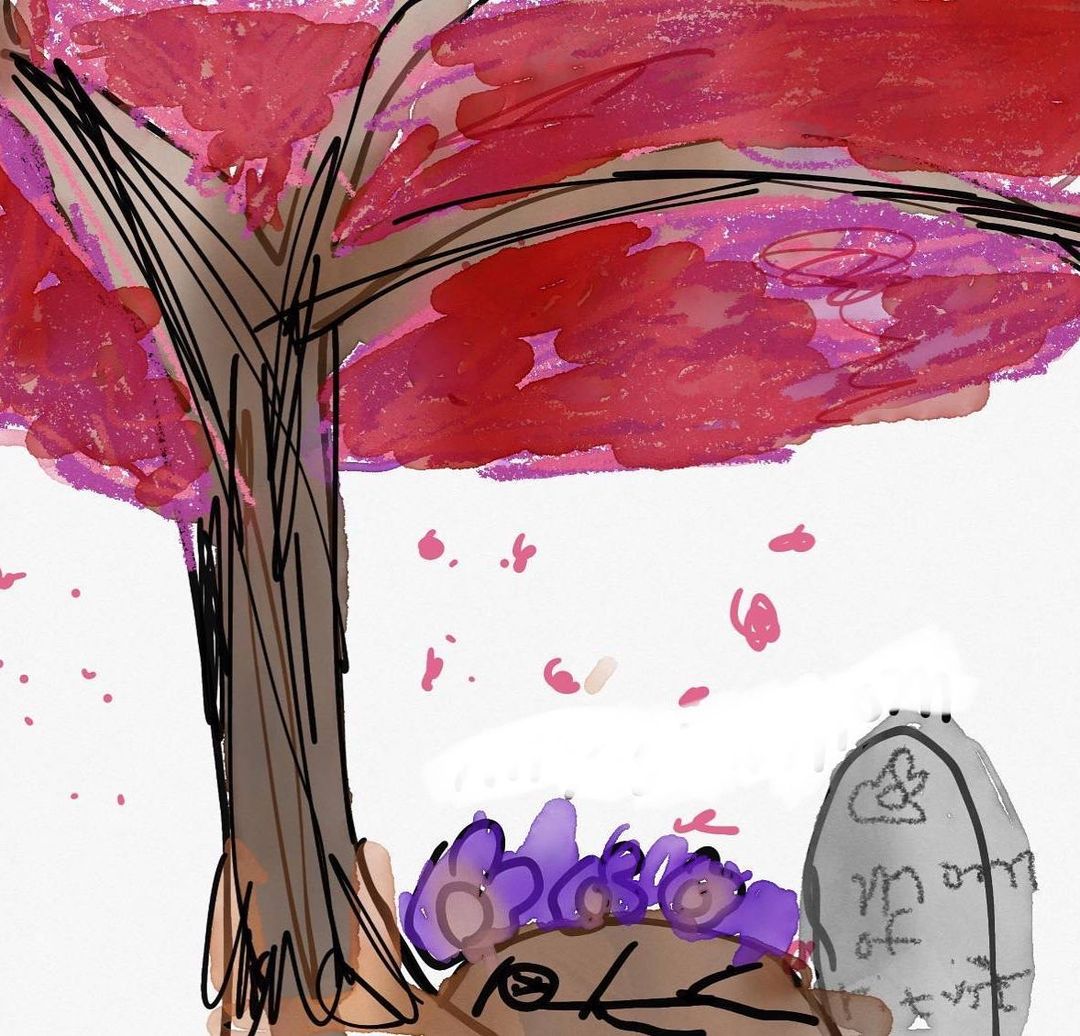
How to Teach Visual Communication to Preschoolers (Age 3-5)
Co-authored with Ritvvij Parrikh.
When Sabi was 18-24 months old, she struggled to communicate her thoughts due to limited language skills. This led to frustration and tantrums.
To help her communicate more effectively, we introduced her to visual communication. While not a replacement for spoken or written language, visual communication can be a valuable tool, especially for explaining abstract concepts.
The Benefits of Teaching Visual Communication
Grasping Ideas
In April 2020, we used doodles to explain the concepts of viruses and hygiene to Sabi. This exercise led to the development of behaviour-change cards, which were used by over 200 parents.
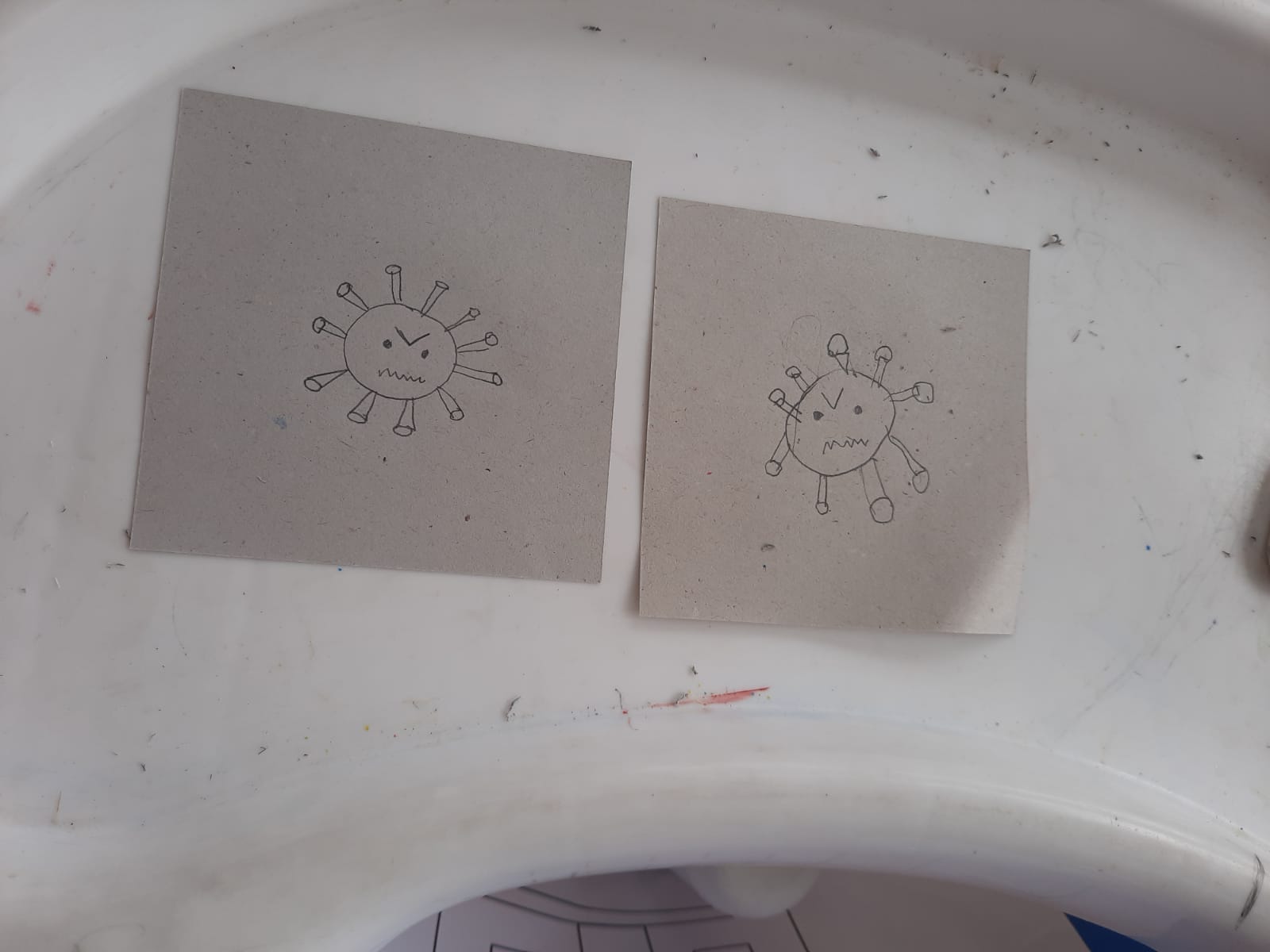
Taking Notes
We stumbled upon Sabi’s hand-drawn notes. One depicted the risks of balcony railings. Another warned against bringing stray animals indoors. A visual way to remember rules.
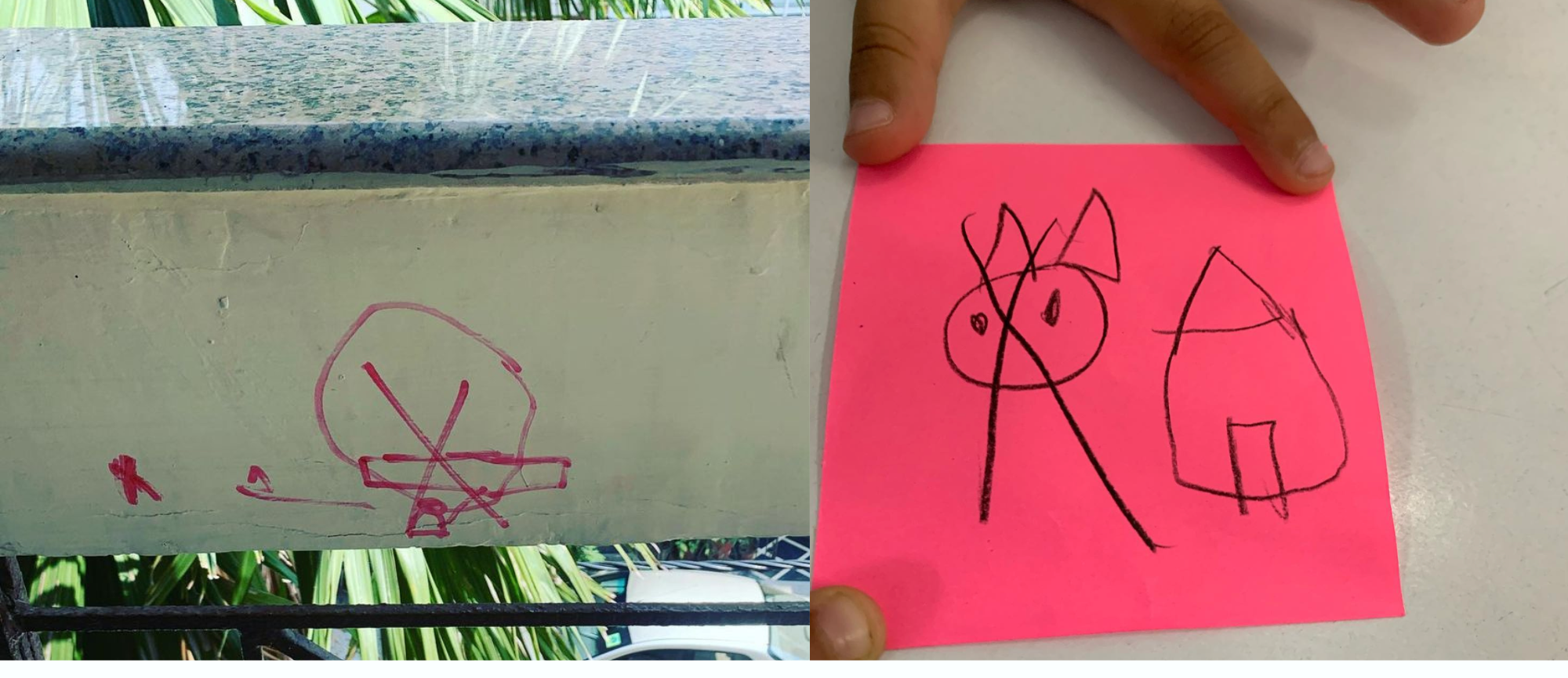
 Copied
CopiedWhen Sabi had trouble remembering the Kata steps, she used her doodling skills to create visual aids, which helped her practice and master the steps efficiently.
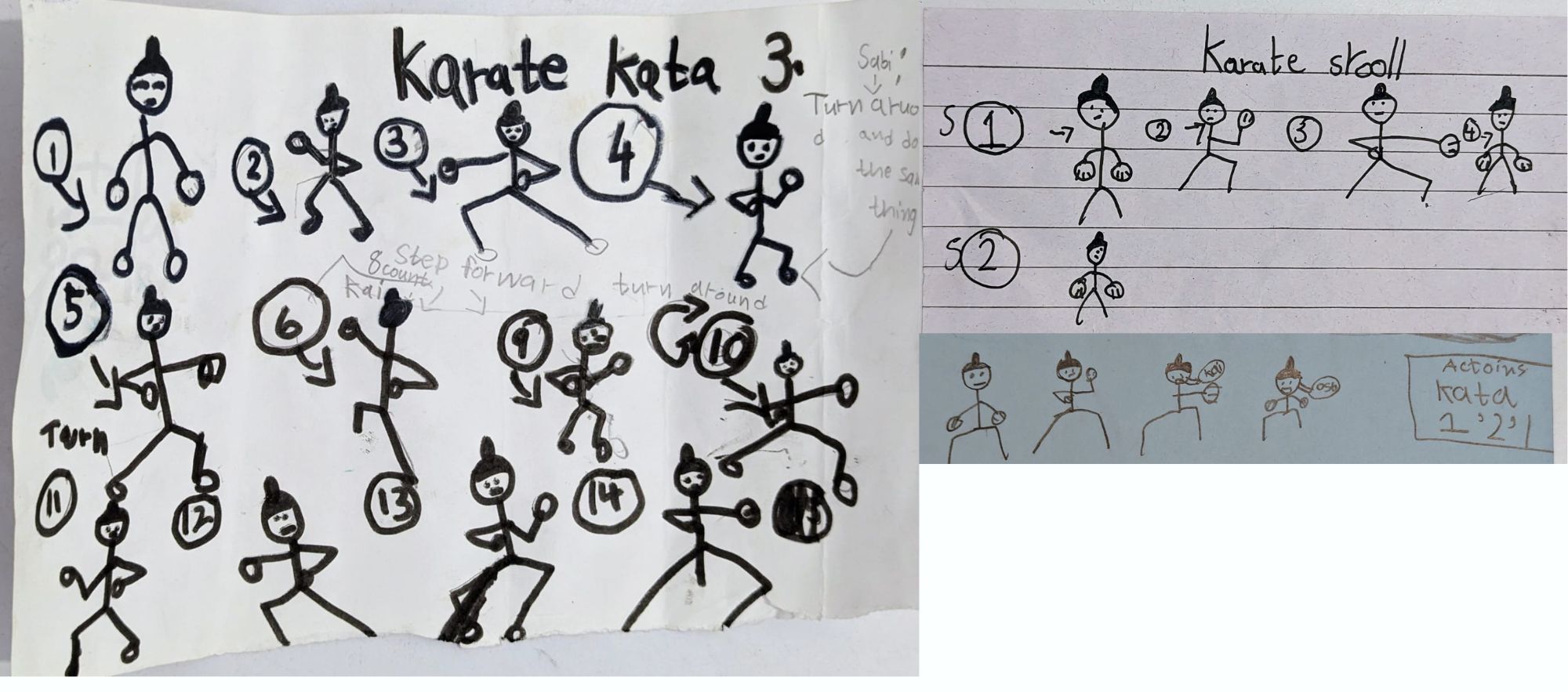
 1
1 Copied
CopiedForward Planning
Quarantine disrupted our daily routines, so we created a new family schedule. Sabi drew her own version.
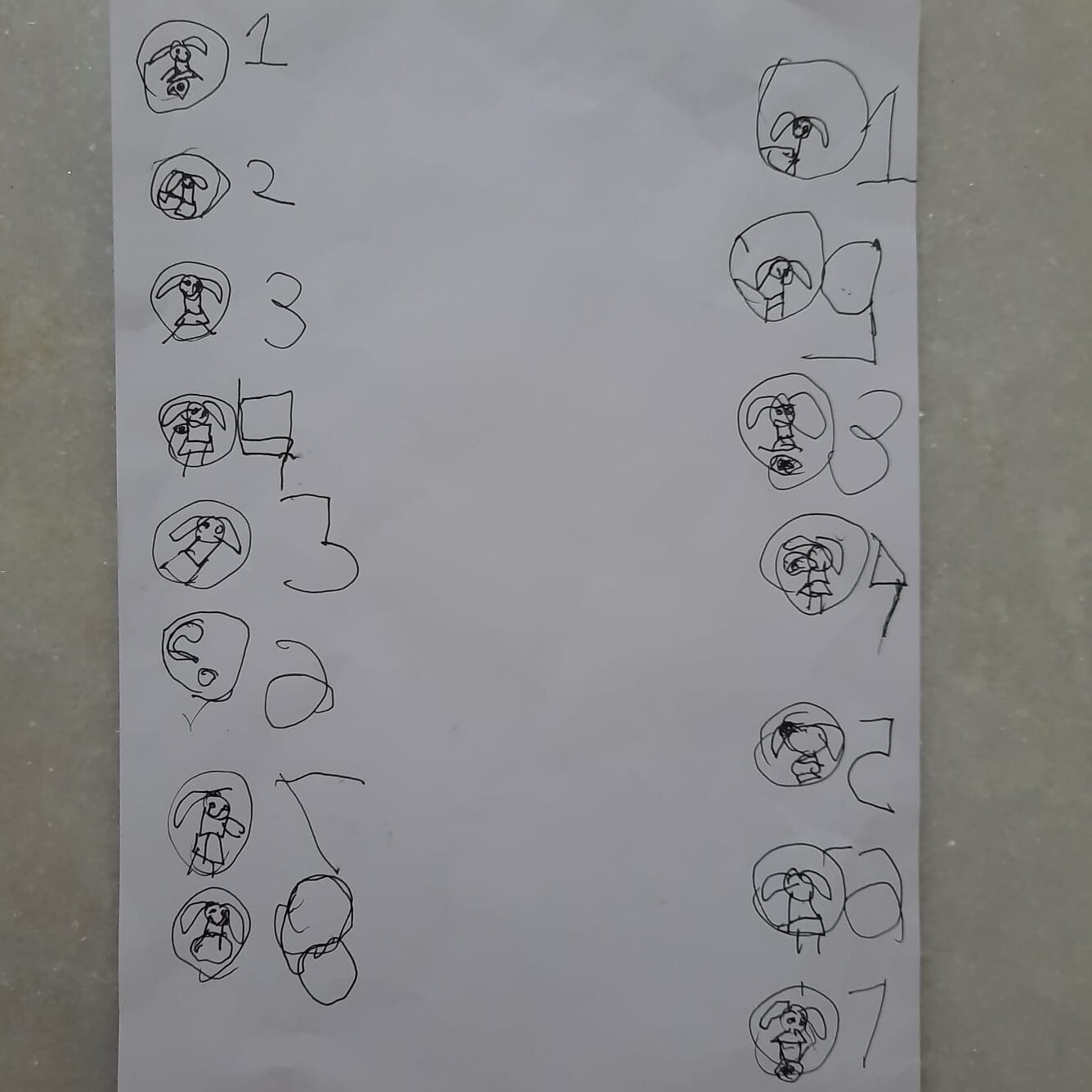
 Copied
CopiedSabi planned to pull a few pranks on her dad:
- Turned on the fan post his winter bath.
- Sneaked up and yelled when he was working.
- Hiding behind doors to scare him.
- Climbing onto him when he was sleeping.
- Tickling his feet during his nap.
- Tossing a fake lizard his way.
 Copied
CopiedIn October 2022, Sabi faced a challenge: trekking up a mountain. She devised a plan to build her endurance for the climb ahead. This helped her to develop her organizational and planning skills.
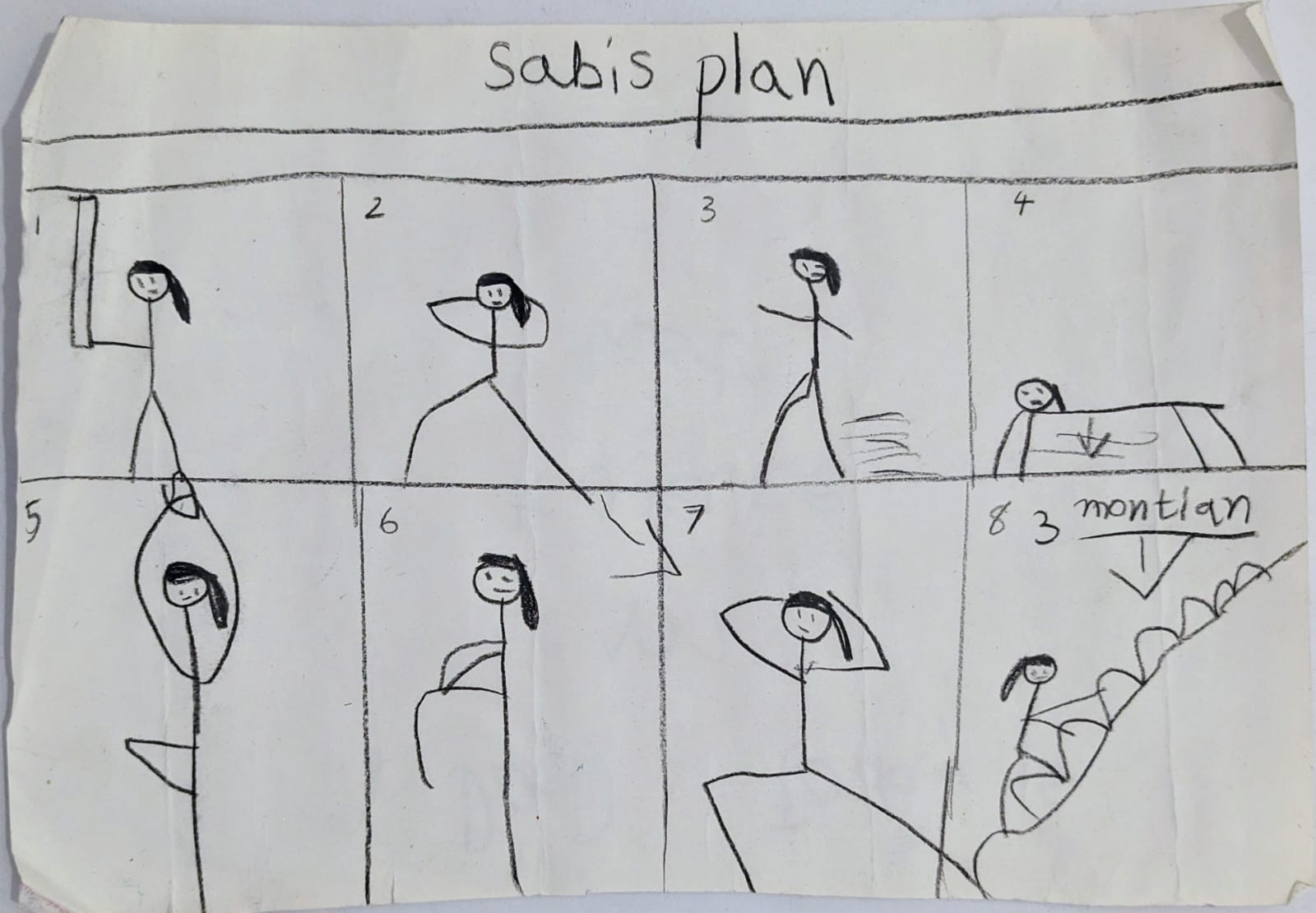
 1
1 Copied
CopiedVisioning
What if Seido Karate Dojo’s hierarchy were mapped to the masters in Kung Fu Panda?
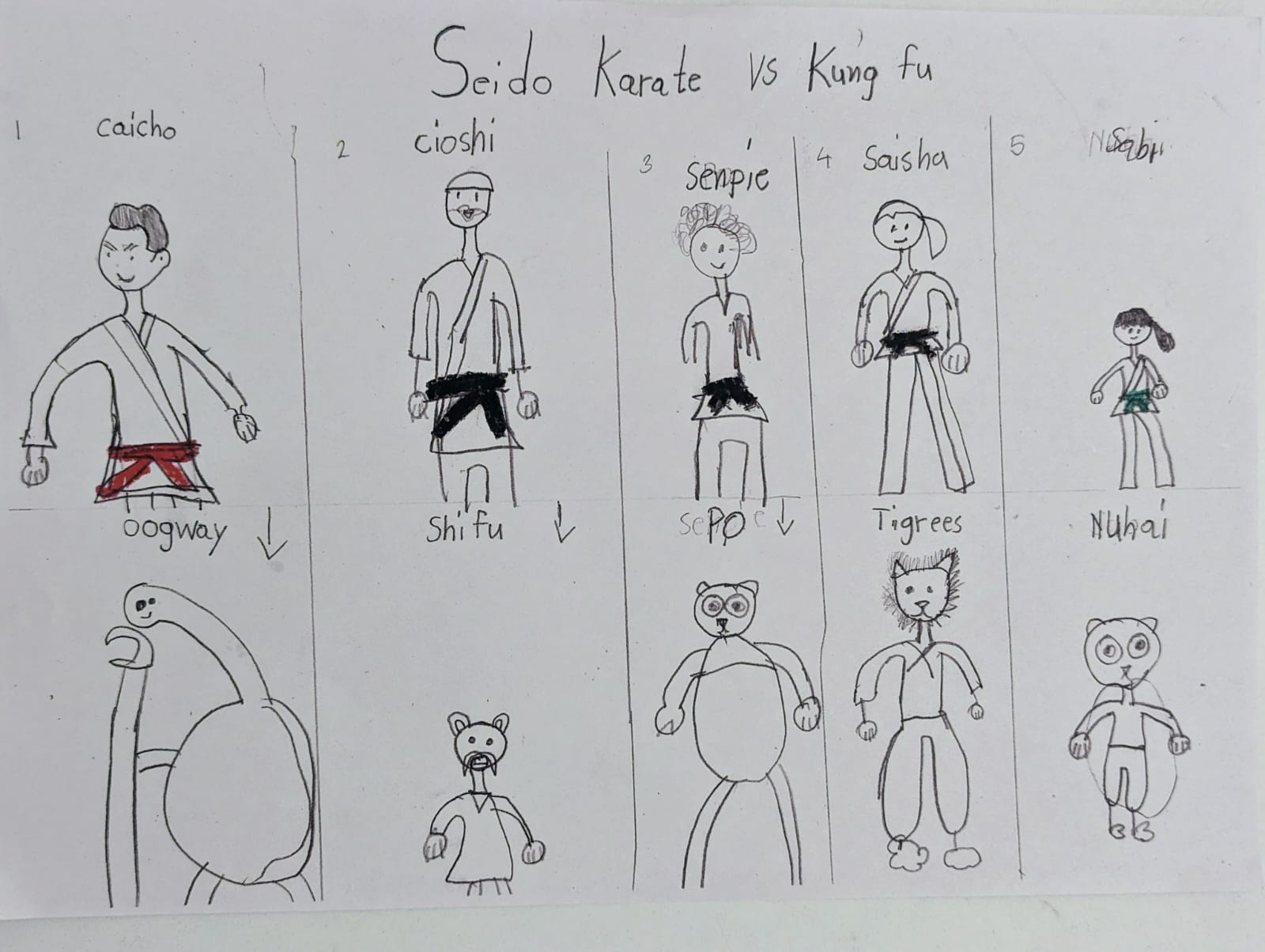
 1
1 Copied
CopiedSabi had to present her career goals at school. She used doodles to sketch out her ideas for a solar-powered car company called “Parikh Enterprise,” which would sell cars with ice cream dispensers. This exercise helped her develop her creativity and problem-solving skills.
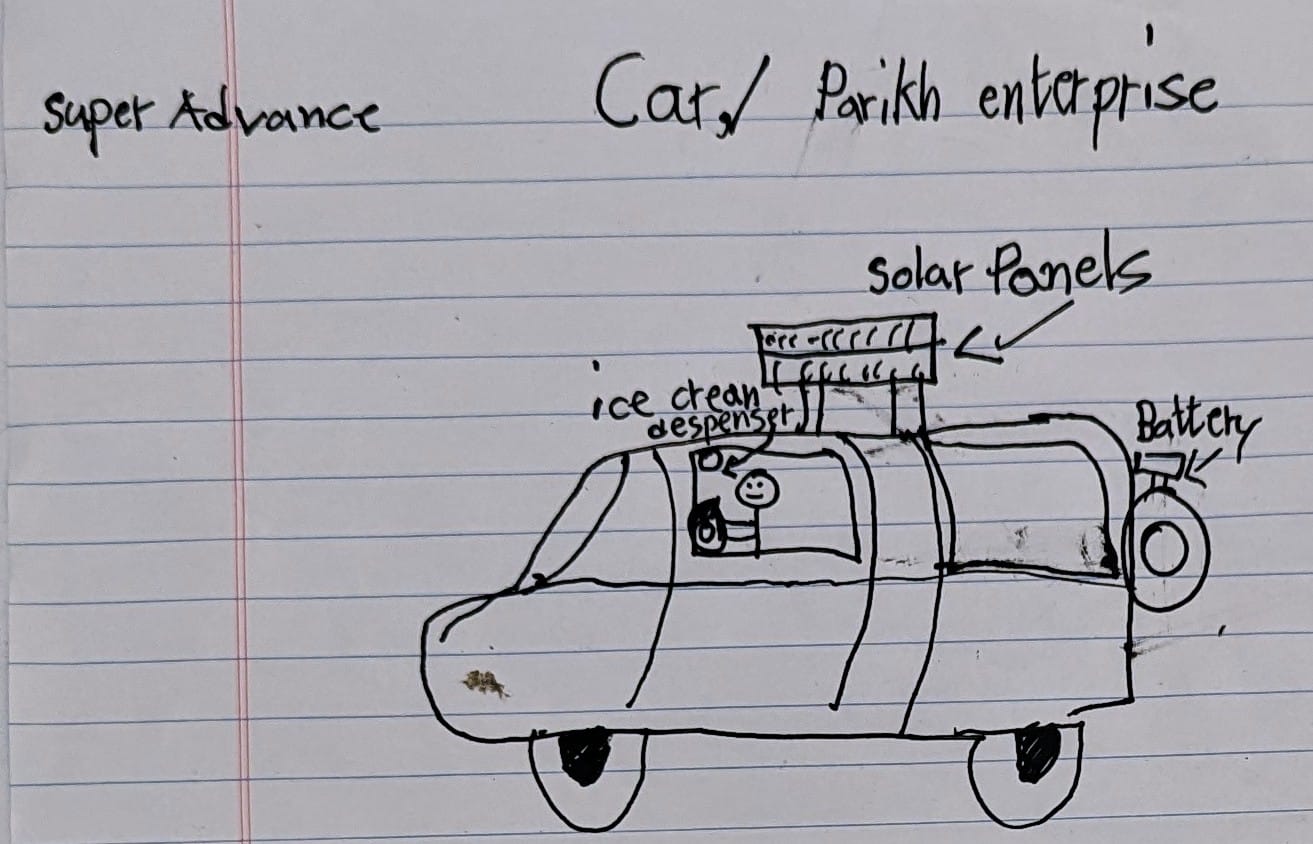
 Copied
CopiedExpressing Grief
Visual communication can also be a powerful tool for expressing grief and other complex emotions. For example, Sabi used doodles to process her feelings about the loss of family members who she had never met.
 Copied
CopiedStorytelling
Sabi wanted to write story book but realized she doesn’t know how to write in words. What could be better idea than explaining it with simple drawings?
This helped her to develop her imagination and communication skills.

 Copied
CopiedOur Approach to Teaching Visual Communication
As engineers and designers, we were familiar with visual communication. However, teaching it to a preschooler was a challenge. We invested in books on visual thinking and doodling to help us, including:
- “Show and Tell”, “The Back of the Napkin”, “Draw to Win”, and “Bla Bla Bla” by Dan Roam.
- Willemien Brand’s series: “Visual Thinking”, “Visual Doing”, “Visual Doing Workbook”, and “Visual Thinking Workbook”.
- “Doodle Revolution”
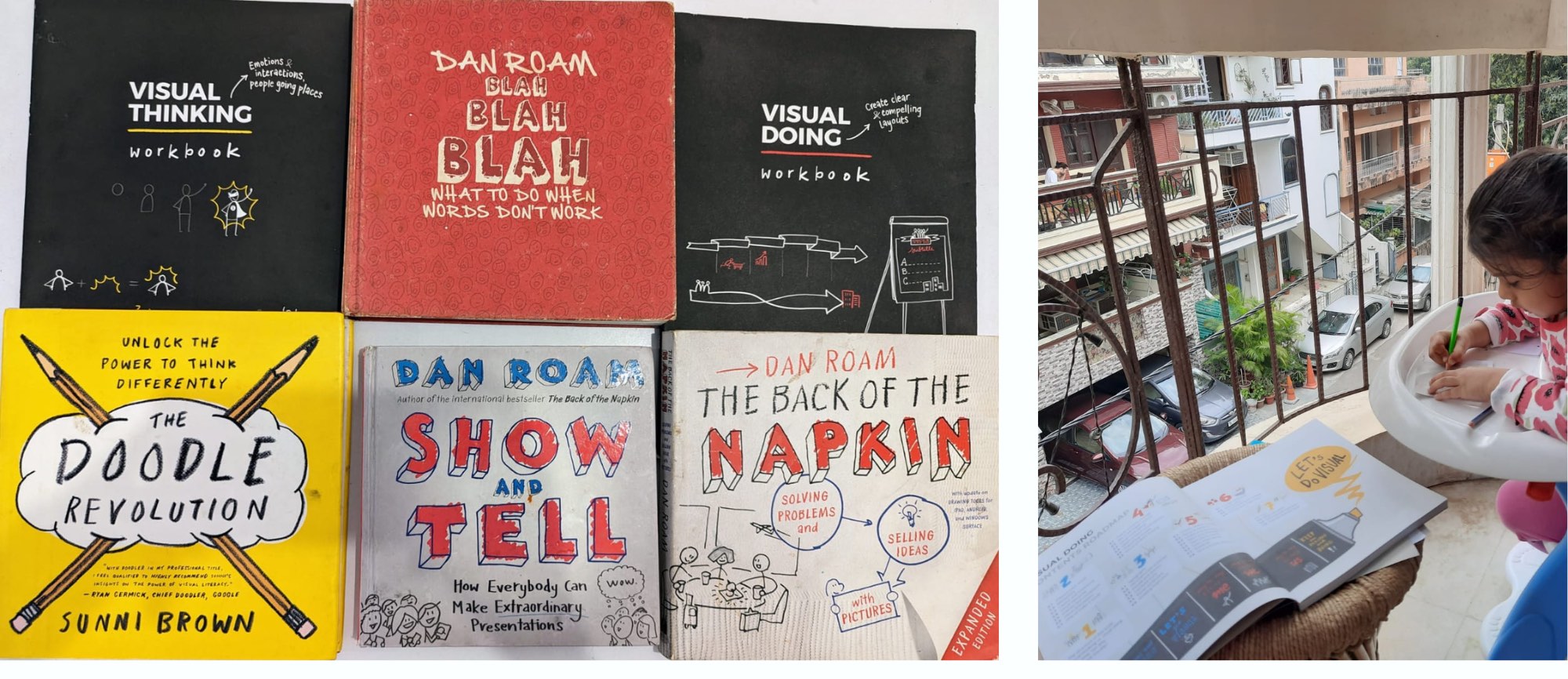
We also embraced the idea that children learn by imitating adults, so we began to doodle ourselves.
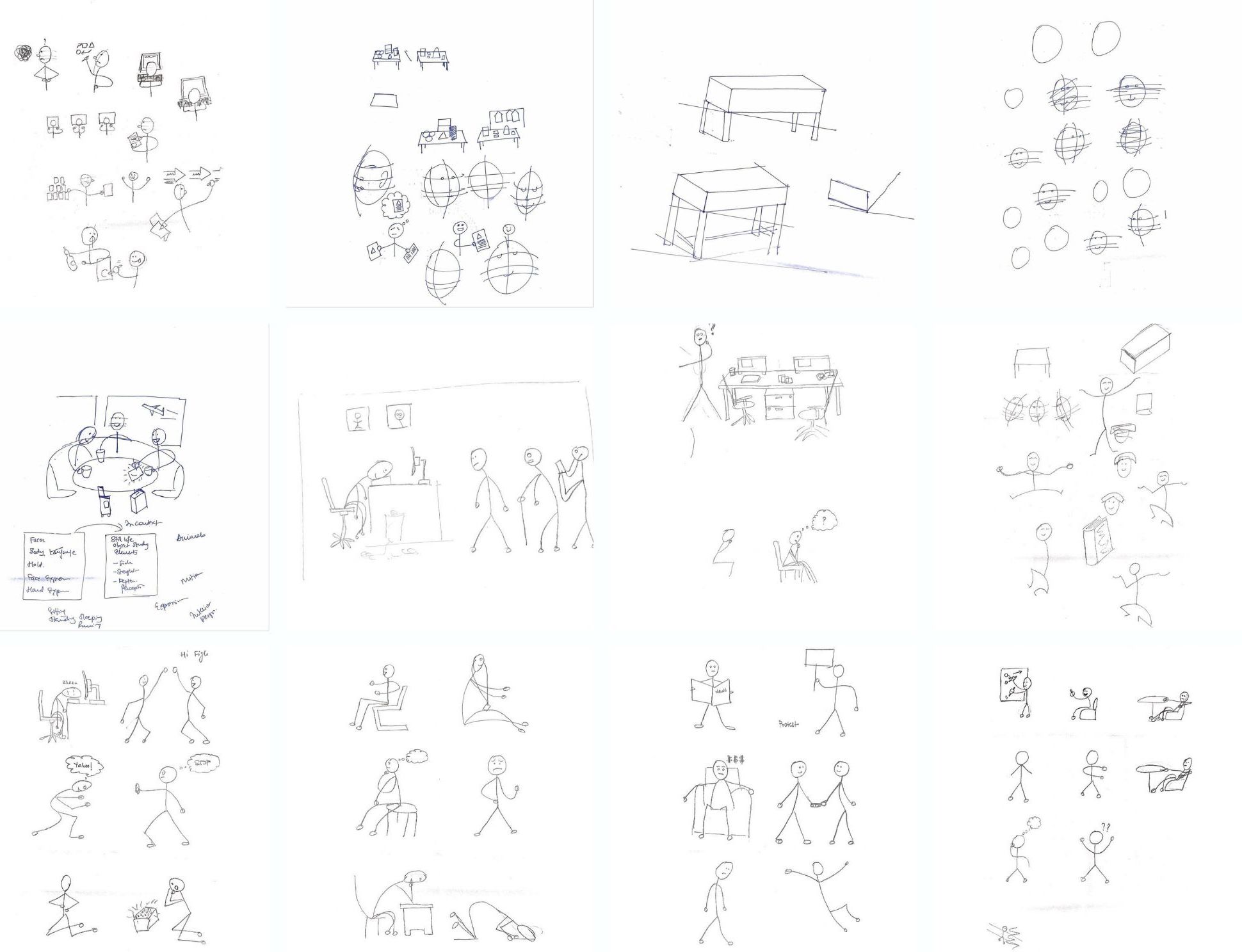
As Sabi’s interest in doodling grew, we encouraged her creativity by allowing her to draw on walls and other surfaces at home and work. This created a joyful and imaginative environment where she felt comfortable expressing herself through art.
